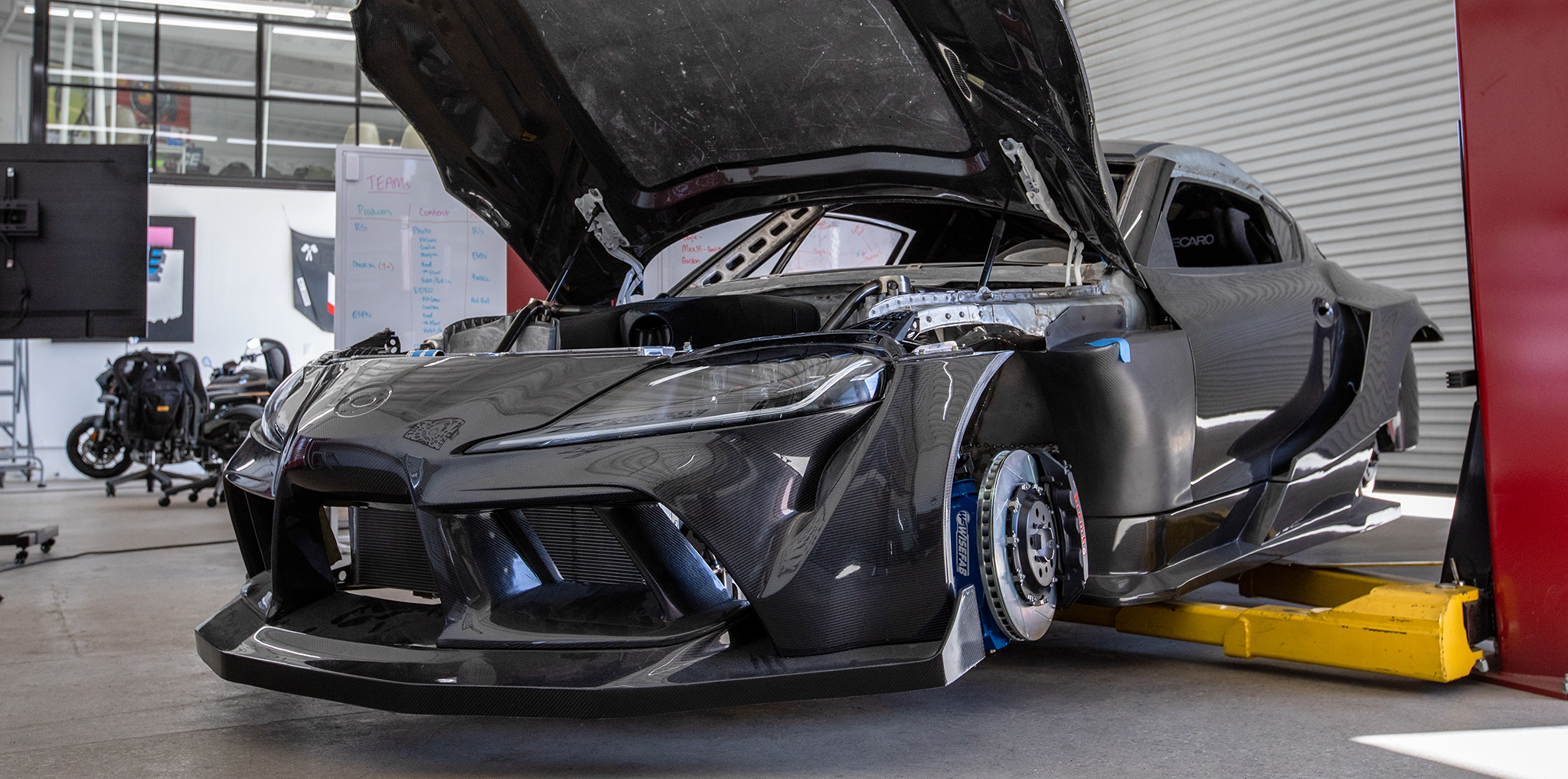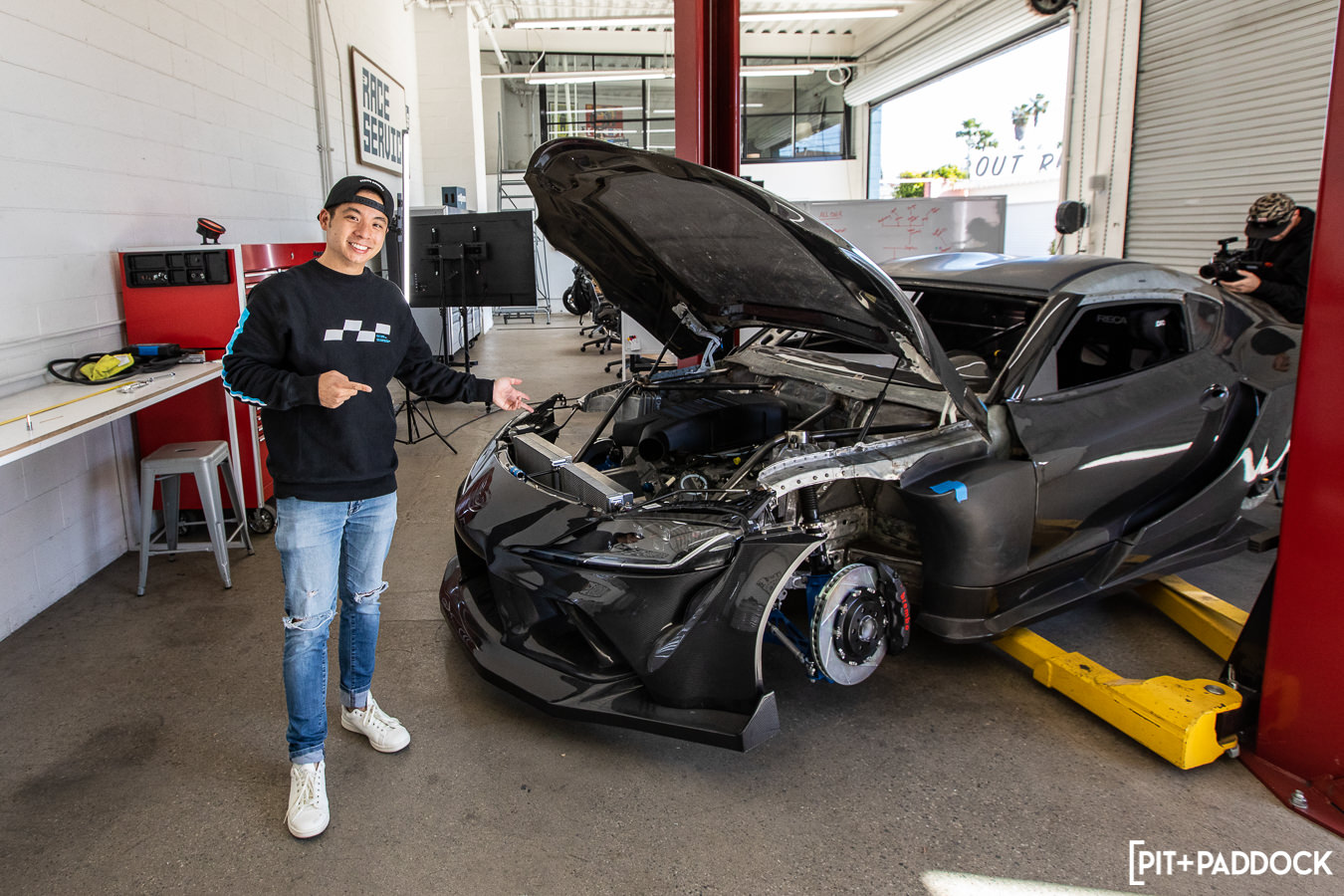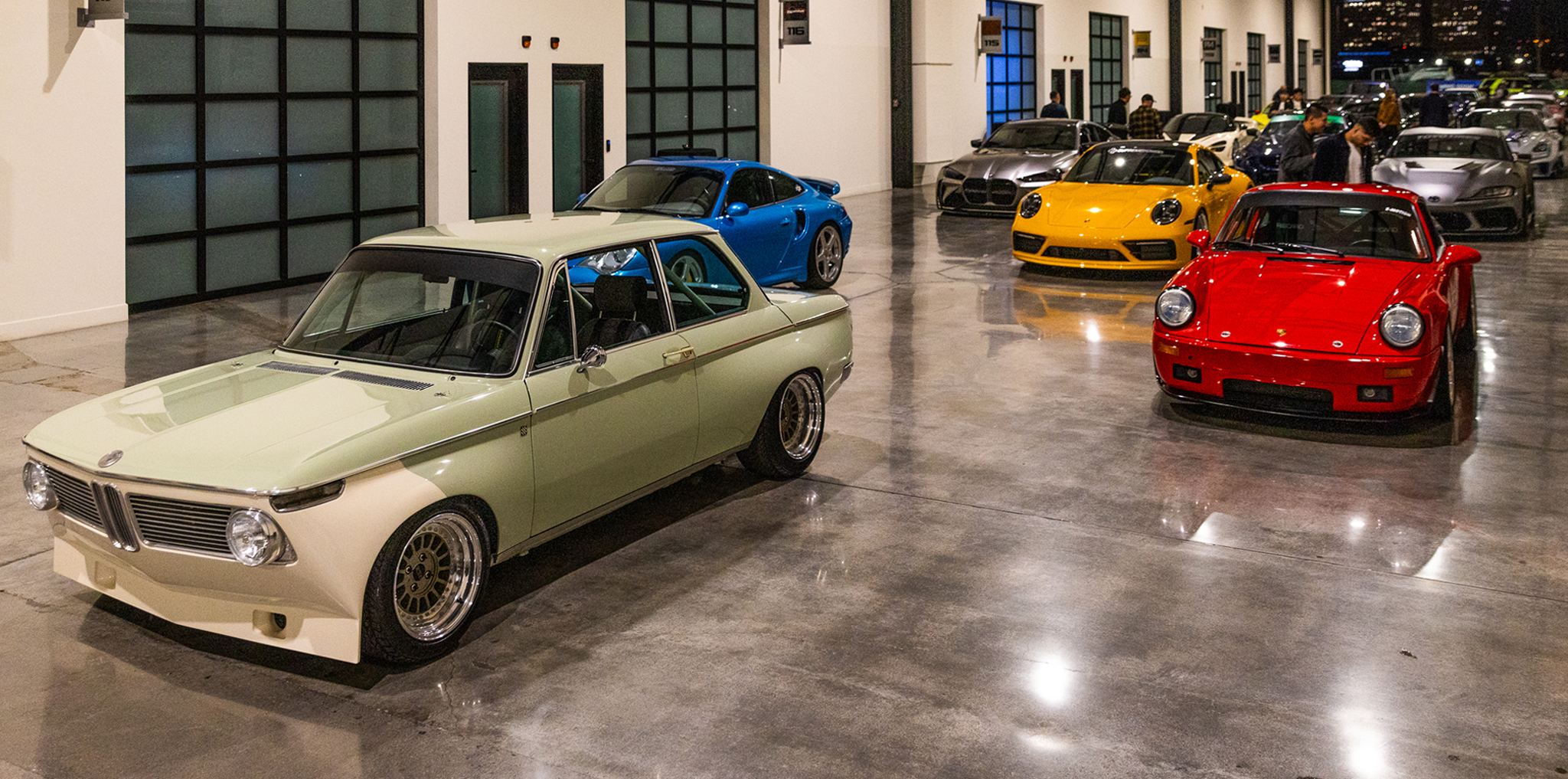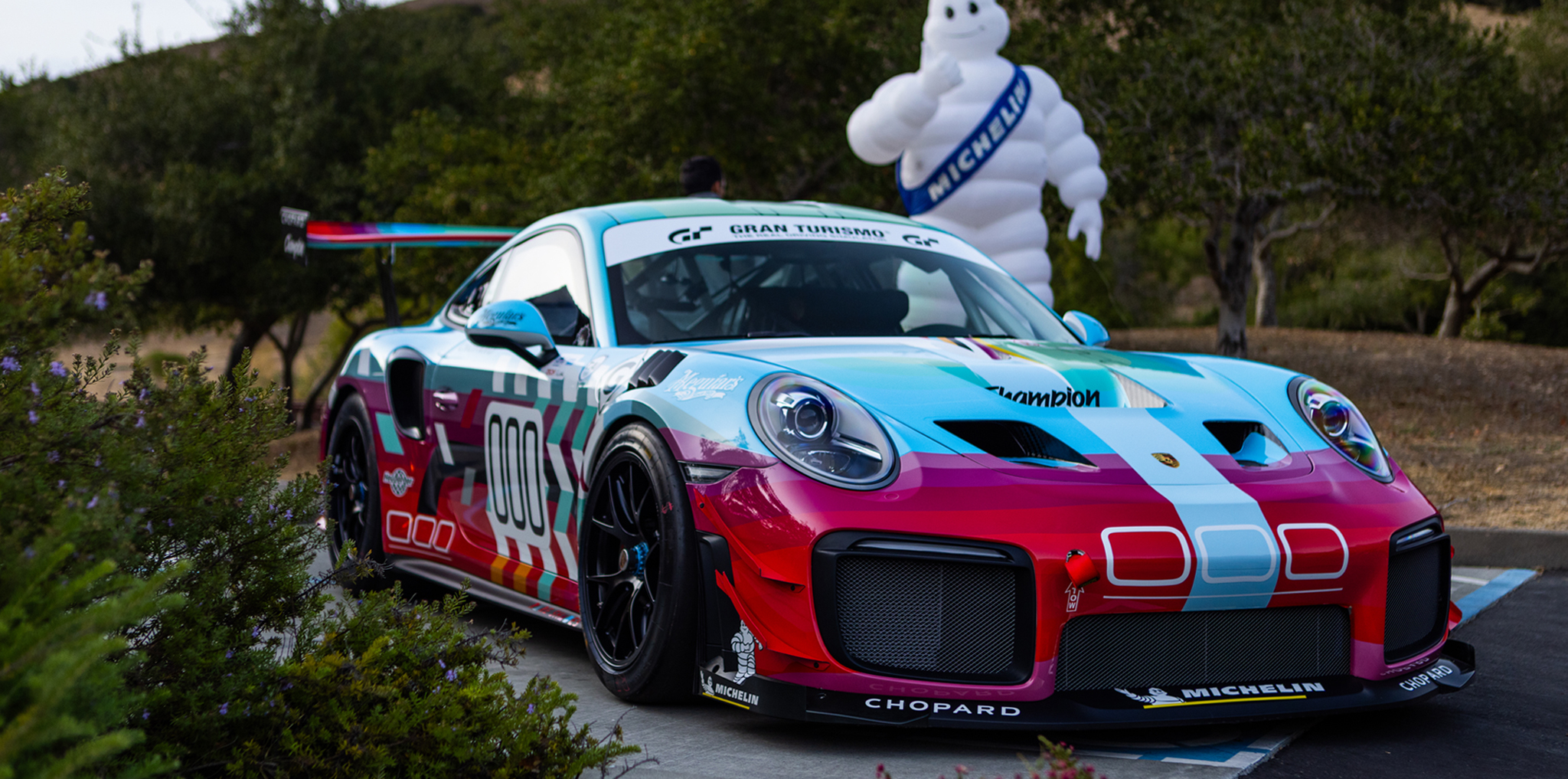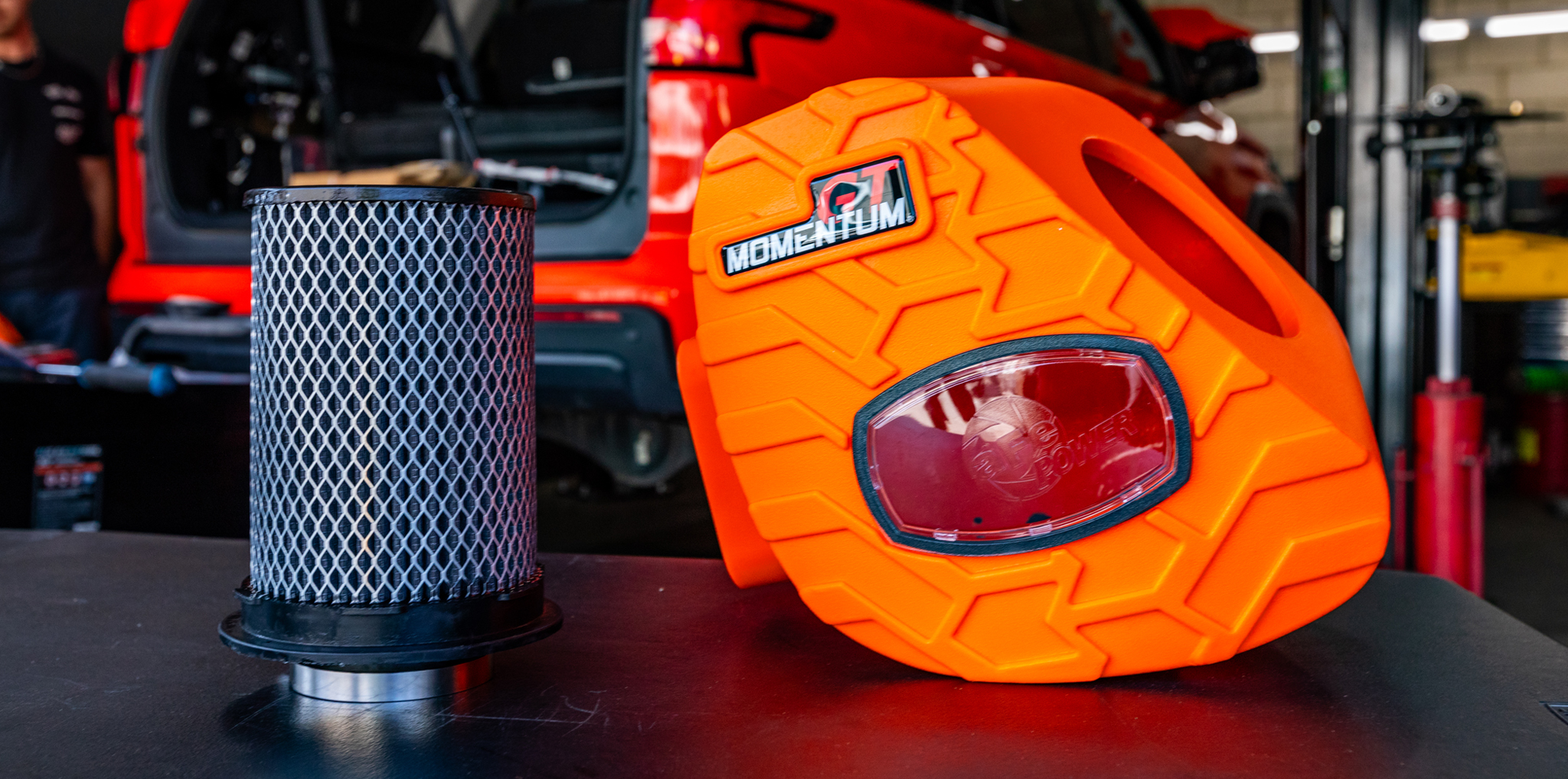- Judd Power has been building race engines since the ‘70s with notable wins in Formula One, IndyCar, Le Mans, Daytona 24 Hours, and more.
- This A90 Supra, which Tuerck has dubbed the #FormulaSupra, will generate 750hp and rev to 11,000rpm!
THE GREAT GR SUPRA
We’ve been seeing GR Supras roaming the streets for almost two years now. Despite the internet’s immediate backlash at Toyota for partnering up with BMW, the new Supra has proven itself as a respectable sports car (yes, even without a manual transmission). It doesn’t take much to make monster horsepower (Titan Motorsports is already pushing close to 900hp on the stock block and turbo location), while road course warriors are throwing down insanely fast lap times (just check out Jackie Ding). I have a feeling we’re just getting warmed up with all the potential the fifth-generation A90/A91 Supra has to offer; however, it was only a matter of time before someone really took things to a whole other level, and that person is Ryan Tuerck.
RYAN TUERCK
Ryan needs very little introduction as he’s one of the most popular and successful pro drifters in the US, currently set to compete in his 15th season of Formula DRIFT. He also made headlines four years ago when he built a Toyota 86 with a Ferrari 458 V8 engine swap nicknamed “GT4586”. This truly insane drift toy wasn’t intended to win in any competitions but created purely as a fun project car to shred tires and go viral (and it did, thanks to Donut Media). His latest A90 Supra project is on pace to outdo the 86 courtesy of a very unexpected V10 engine swap.
MOTORSPORT VIBES
Now, most folks can appreciate a Ferrari V8 and its unmistakable high-pitched scream, but how much do you know about the Judd V10 engine? Based in England, Judd Power has been building race engines since the ‘70s with notable wins in Formula One, IndyCar, Le Mans, Daytona 24 Hours, and more. They are also known for supplying engines to some of the most iconic hillclimb cars, which is exactly what inspired Ryan to seek out a Judd powerplant for his Supra (see Georg Plasa BMW). The particular engine in Ryan’s possession is a Judd GV4, a 4.0-liter V10 derived from Formula One and raced in Le Mans. In case you’re wondering, it makes 750hp and revs up to 11,000rpm!
AEM DESIGNS CUSTOM INTAKE
Ryan’s been documenting the entire build on his YouTube channel, which I highly recommend taking some time out of your day to watch (he also drops a new episode every Sunday). There’s an unexplainable number of manhours into the build, so it’s quite inspiring and enlightening to follow along with all the steps and details for something as extreme as this. As a Supra owner and fanboy myself, I’ve been curious about the project since Tuerck announced the #FormulaSupra six months ago. As you can imagine, I was pretty stoked when Chris Matye, brand manager of AEM Intakes, invited me to Race Service, where I was able to snap some photos and get a glimpse at one of the A90’s latest upgrades, a one-off carbon intake.
INTERVIEW WITH CHRIS MATYE OF AEM
Can you give us a quick background behind AEM intakes?
AEM was established in 1987, originally as a tuning and performance shop. We developed one of the first packaged air intake systems in the early ‘90s for the Honda CRX, and intakes continue to be our focus today.
What’s hot today for you guys?
With more vehicles leaving the factory with turbochargers than ever before, we have seen the demand for these applications skyrocket. Eight out of ten from our top ten intake SKUs are for factory turbocharged vehicles. In addition to intakes, we will also begin releasing more charge pipe kits soon, especially for the BMW market.
Very cool. So what’s been AEM’s relationship with Tuerck over the years?
Tuerck has been using AEM DRYFLOW air filters on his builds for years. We have been his filter of choice for multiple Formula DRIFT competition cars, street cars, the famous GT4586, and various others.
When did you first hear about the V10 Supra build?
With Tuerck and the Race Service team breaking the internet with the GT4586, the pressure was on to build something even crazier next time around. When the A90 was finally announced as a production reality, there was a lot of talk about who was going to have the first 2JZ-swapped A90. Tuerck and Race Service had to do something different, a JZ-powered A90 wasn’t going to be unique. An LFA V10 was considered, but it turns out an ex-Formula One Judd V10 is actually easier to get your hands on than a spare LFA engine. As soon as Ryan ordered the Judd, I got a text asking if I’d be able to make a custom carbon intake and filter setup. AEM was instantly on board; we just weren’t sure exactly how we were going to do it yet.
What’s the story behind designing this intake?
This is one of those projects that you just go all-in on. With the Judd V10’s Formula One roots, we knew carbon fiber was the only option. I reached out to the Judd engineers, and they sent over some of the drawings they had on file; it was basically hand-drawn blueprints from the early ‘90s. While it would have been possible to manually input the Judd factory data into CAD, it was just faster and more efficient to laser scan the engine, then model our design in 3D. This would allow us to rapid prototype a 3D printed design to fit check on the car. Engineering exercises like this allow us to showcase and highlight what we’re capable of as a company, from laser scanning, CAD design, 3D printing prototypes, billet aluminum mold machining, layup of dry carbon, and curing in our autoclave. We’re able to control the quality of the intake from start to finish — which is exciting for us — and everything is engineered and built in-house by the same team who designs all our intake systems.
Are there major challenges you’re facing?
There were design challenges from the get-go. The Judd engine comes with an airbox base that integrates into the ITB runners. Since this engine was originally designed and used in Formula cars and Le Mans prototypes, this engine is typically mounted behind the driver. The airbox base attaches to a big forward-facing air scoop allowing its design to go vertical with no other obstacles to design around. There’s not exactly an off-the-shelf airbox design to use with the Judd when being mounted in a street car, so we had to design around the factory hood line, front-mount radiators, fender wells, oil coolers, radiator core support, and body panels while still placing the air filters in the path of clean, fresh air. We need to make sure the roof of the box sits high enough over the velocity stacks to avoid creating air turbulence but still be low enough to fit under the hood. The box has to have enough volume to not cause an airflow restriction for the engine, which revs up to 11,000rpm.
I’m curious, why even cover those pretty throttle bodies?
The short answer is, this is a very expensive engine, and it needs to be protected. A rogue pebble or tire chunk could be disaster. Having a proper high-flowing air filter system is cheap insurance to ensure engine longevity.
Now that the first prototype has been test fitted at Race Service, what’s next on the agenda?
We are going to redesign the box slightly and make another 3D print. We have to make adjustments to the flange, the inlet angles, and make the box about 1-inch taller. Then we can test it again, move on to the billet mold machining and carbon fiber layup.
Looking forward to checking out the final piece! Thanks, Chris!

